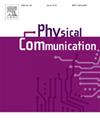增强 Wi-Fi 网络无线密钥生成一致性和独立性的实用方案
IF 2
4区 计算机科学
Q3 ENGINEERING, ELECTRICAL & ELECTRONIC
引用次数: 0
摘要
Wi-Fi 网络受益于物理层无线密钥生成技术,这是一种理论上安全的提高信息传输安全性的方法。本文介绍了基于 Wi-Fi 信号传输模型的一致独立密钥生成(CIKG)方案。它解决了信道噪声和虚拟载波低通效应的双重挑战。该方案首先从整个信号前导符(包括长符号和短符号)中提取信道频率响应(CFR),然后对短符号生成的信道频率响应进行三次样条插值,以实现与长符号相对应的细粒度频率衰减。对细化的 CFR 进行平均处理,以增强抗噪能力,提高关键点的一致性。随后,利用反傅里叶变换获得信道脉冲响应(CIR),并通过解卷积策略减少虚拟载波低通滤波对 CIR 多径信息的影响,从而提高密钥的独立性。在 Wi-Fi 网络中实施的 CIKG 方案在不同场景下的有效性得到了严格测试。定量评估表明,该方案大大提高了密钥的一致性,与传统的基于CFR的方案相比,信噪比提高了5 dB,信息熵提高了20%,显著增强了密钥的独立性。这些进步肯定了 CIKG 方案作为开发稳健安全的无线通信网络的强大解决方案的潜力。本文章由计算机程序翻译,如有差异,请以英文原文为准。
A practical scheme for enhancing consistency and independence in wireless key generation for Wi-Fi networks
Wi-Fi networks benefit from physical layer wireless key generation, a theoretically secure method for improving information transmission security. This paper introduces the Consistent Independent Key Generation (CIKG) scheme based on the Wi-Fi signal transmission model. It addresses the dual challenges of channel noise and virtual carrier low-pass effects. The scheme begins with extracting the channel frequency response (CFR) from the entire signal preamble, including both long and short symbols, followed by applying cubic spline interpolation to the short symbol-derived CFR to achieve fine-grained frequency fading corresponding to the long symbols. This refined CFR is averaged to bolster noise resistance, improving key consistency. Subsequently, the inverse Fourier transform is used to obtain the channel impulse response (CIR), and a deconvolution strategy reduces the impact of virtual carrier low-pass filtering on the multipath information of CIR, thus improving key independence. Implemented within Wi-Fi networks, the effectiveness of the CIKG scheme is rigorously tested across diverse scenarios. Quantitative evaluations indicate that the scheme substantially improves key consistency, achieving a 5 dB enhancement in signal-to-noise ratio over traditional CFR-based schemes and elevates information entropy by 20%, significantly boosting key independence. These advances affirm the potential of the CIKG scheme as a formidable solution for developing robust and secure wireless communication networks.
求助全文
通过发布文献求助,成功后即可免费获取论文全文。
去求助
来源期刊

Physical Communication
ENGINEERING, ELECTRICAL & ELECTRONICTELECO-TELECOMMUNICATIONS
CiteScore
5.00
自引率
9.10%
发文量
212
审稿时长
55 days
期刊介绍:
PHYCOM: Physical Communication is an international and archival journal providing complete coverage of all topics of interest to those involved in all aspects of physical layer communications. Theoretical research contributions presenting new techniques, concepts or analyses, applied contributions reporting on experiences and experiments, and tutorials are published.
Topics of interest include but are not limited to:
Physical layer issues of Wireless Local Area Networks, WiMAX, Wireless Mesh Networks, Sensor and Ad Hoc Networks, PCS Systems; Radio access protocols and algorithms for the physical layer; Spread Spectrum Communications; Channel Modeling; Detection and Estimation; Modulation and Coding; Multiplexing and Carrier Techniques; Broadband Wireless Communications; Wireless Personal Communications; Multi-user Detection; Signal Separation and Interference rejection: Multimedia Communications over Wireless; DSP Applications to Wireless Systems; Experimental and Prototype Results; Multiple Access Techniques; Space-time Processing; Synchronization Techniques; Error Control Techniques; Cryptography; Software Radios; Tracking; Resource Allocation and Inference Management; Multi-rate and Multi-carrier Communications; Cross layer Design and Optimization; Propagation and Channel Characterization; OFDM Systems; MIMO Systems; Ultra-Wideband Communications; Cognitive Radio System Architectures; Platforms and Hardware Implementations for the Support of Cognitive, Radio Systems; Cognitive Radio Resource Management and Dynamic Spectrum Sharing.
 求助内容:
求助内容: 应助结果提醒方式:
应助结果提醒方式:


